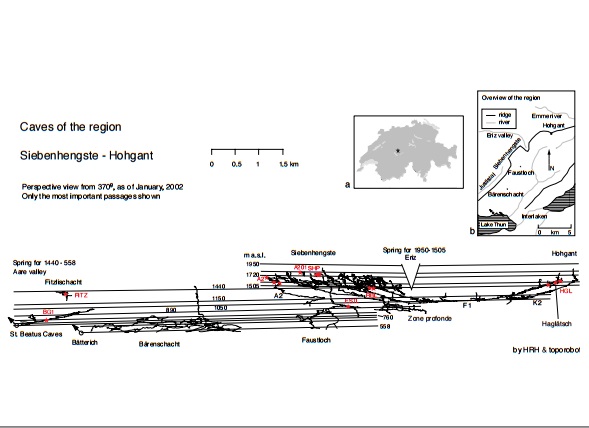Dating of Caves by Cosmogenic Nuclides: Method, Possibilities, and the Siebenhengste Example
DOI:
https://doi.org/10.3986/ac.v34i1.278Abstract
Kozmični žarki povzročajo nastanek kozmogenih nuklidov na površini zemlje in tik pod njo. Za datiranje jamskih sedimentov sta posebej pomembna 10Be in 26Al, ki nastajata v kremenu. Ko je kamen na površini in izpostavljen kozmičnemu sevanju, nastajata v stalnem razmerju. Ko ga zanese v podzemlje, se tvorba kozmogenih nuklidov ustavi, nadaljuje pa se njihov radioaktivni razpad. Ker 26 Al razpada hitreje, lahko iz razmerja med njima izračunamo čas, ki je potekel odkar je kremen pod zemljo. Metodo lahko uporabimo na sedimentih, ki so pokopani oziroma v jami med 0.1 in 5 milijoni let. Na ta način lahko v idealnih primerih izračunamo hitrost vrezovanja dolin. Z opisano metodo smo določili starost najstarejših delov sistema Siebenhengste v Švici. Najstarejši sediment je star 4.4 ± 0.6 Ma in nakazuje, da je na tem območju potekalo zakrasevanje že v pliocenu.
Cosmic rays produce nuclides at and near the Earthʼs surface. 10Be and 26Al in quartz are of particular interest for dating cave sediments. These two nuclides are produced at the surface at a fixed ratio. If the quartz is carried from the surface into a cave, the sediment is shielded from additional cosmogenic nuclide production, and the inherited 10Be and 26Al decay radioactively. Because 26Al decays more rapidly than 10Be, the ratio of these two nuclides indicates the time since the sediment was washed underground. The burial dating method can be applied to sediments in the age range of approximately 0.1 to 5 Ma. In ideal cases, we get information about valley lowering rates. If the provenance of the sediment is known, averaged erosion rates of the source area can be estimated. The oldest cave phases of the Siebenhengste system, Switzerland, were dated using cosmogenic nuclides. The oldest sediment is 4.4 ± 0.6 Ma and thus indicates Pliocene karstification of the Siebenhengste.
Downloads

Downloads
Published
How to Cite
Issue
Section
License
Authors guarantee that the work is their own original creation and does not infringe any statutory or common-law copyright or any proprietary right of any third party. In case of claims by third parties, authors commit their self to defend the interests of the publisher, and shall cover any potential costs.
More in: Submission chapter




